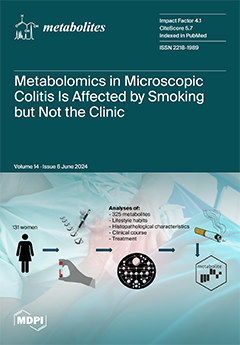With people living with HIV (PLWH) reaching the senium, the importance of aging-related comorbidities such as metabolic syndrome (MS) becomes increasingly important. This study aimed to determine the additive effect of MS on brain atrophy in PLWH. This prospective study included 43 PLWH,
[...] Read more.
With people living with HIV (PLWH) reaching the senium, the importance of aging-related comorbidities such as metabolic syndrome (MS) becomes increasingly important. This study aimed to determine the additive effect of MS on brain atrophy in PLWH. This prospective study included 43 PLWH, average age of 43.02 ± 10.93 years, and 24 healthy controls, average age of 36.87 ± 8.89 years. PLWH were divided into two subgroups: without MS and with MS, according to NCEP ATP III criteria. All patients underwent brain magnetic resonance imaging (MRI) on a 3T clinical scanner with MR volumetry, used for defining volumes of cerebrospinal fluid (CSF) spaces and white and grey matter structures, including basal ganglia. A Student’s
t-test was used to determine differences in brain volumes between subject subgroups. The binary classification was performed to determine the sensitivity and specificity of volumetry findings and cut-off values. Statistical significance was set at
p < 0.05. PLWH presented with significantly lower volumes of gray matter, putamen, thalamus, globus pallidus, and nc. accumbens compared to healthy controls; cut-off values were: for gray matter 738.130 cm
3, putamen 8.535 cm
3, thalamus 11.895 cm
3, globus pallidus 2.252 cm
3, and nc. accumbens 0.715 cm
3. The volumes of CSF and left lateral ventricles were found to be higher in PLWH with MS compared to those without MS, where, with a specificity of 0.310 and sensitivity of 0.714, it can be assumed that PLWH with a CSF volume exceeding 212.83 cm
3 are likely to also have MS. This suggests that PLWH with metabolic syndrome may exhibit increased CSF volume above 212.83 cm
3 as a consequence of brain atrophy. There seems to be an important connection between MS and brain volume reduction in PLWH with MS, which may add to the accurate identification of persons at risk of developing HIV-associated cognitive impairment.
Full article






